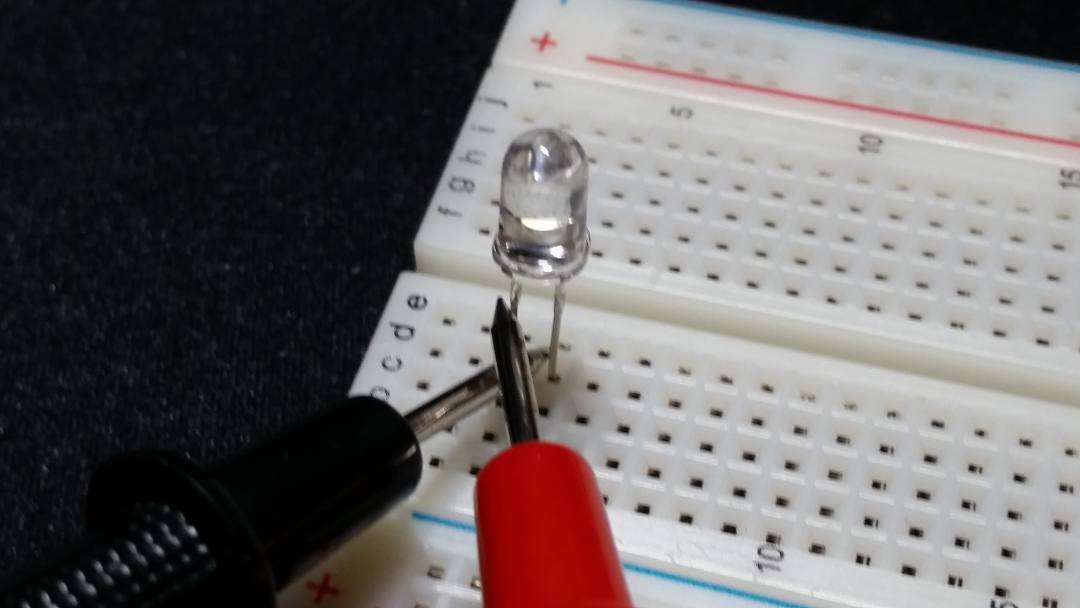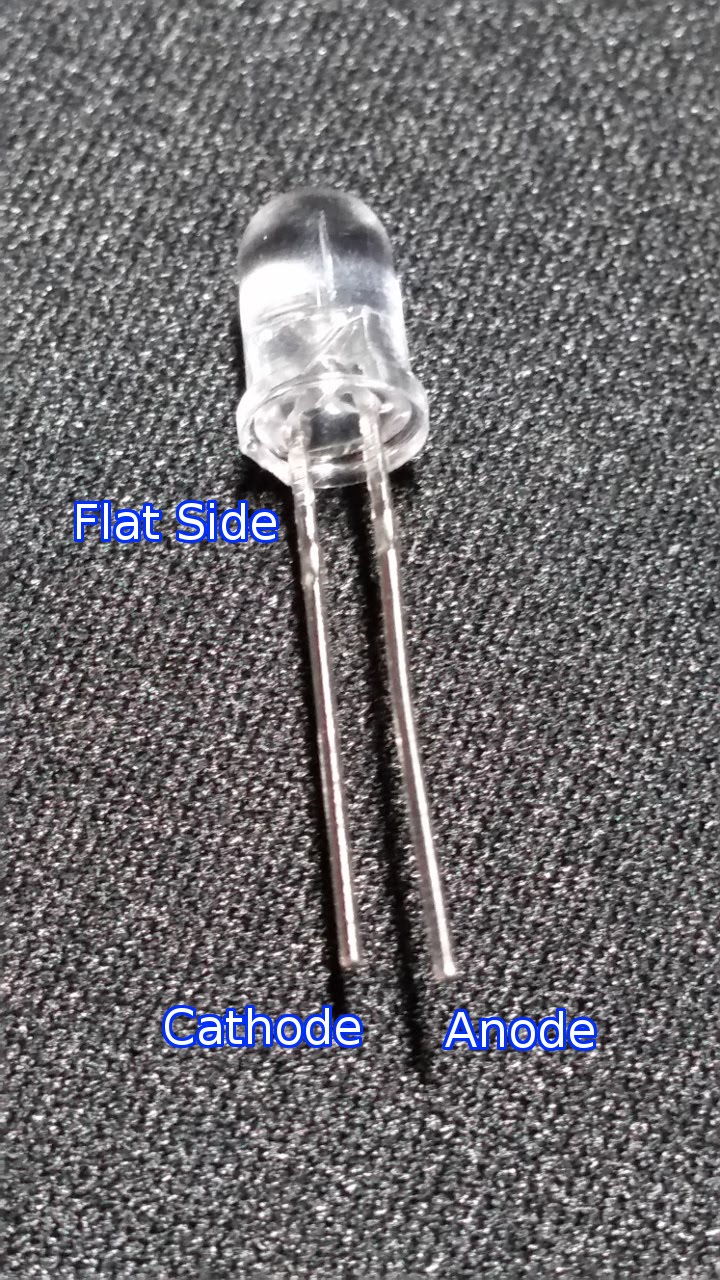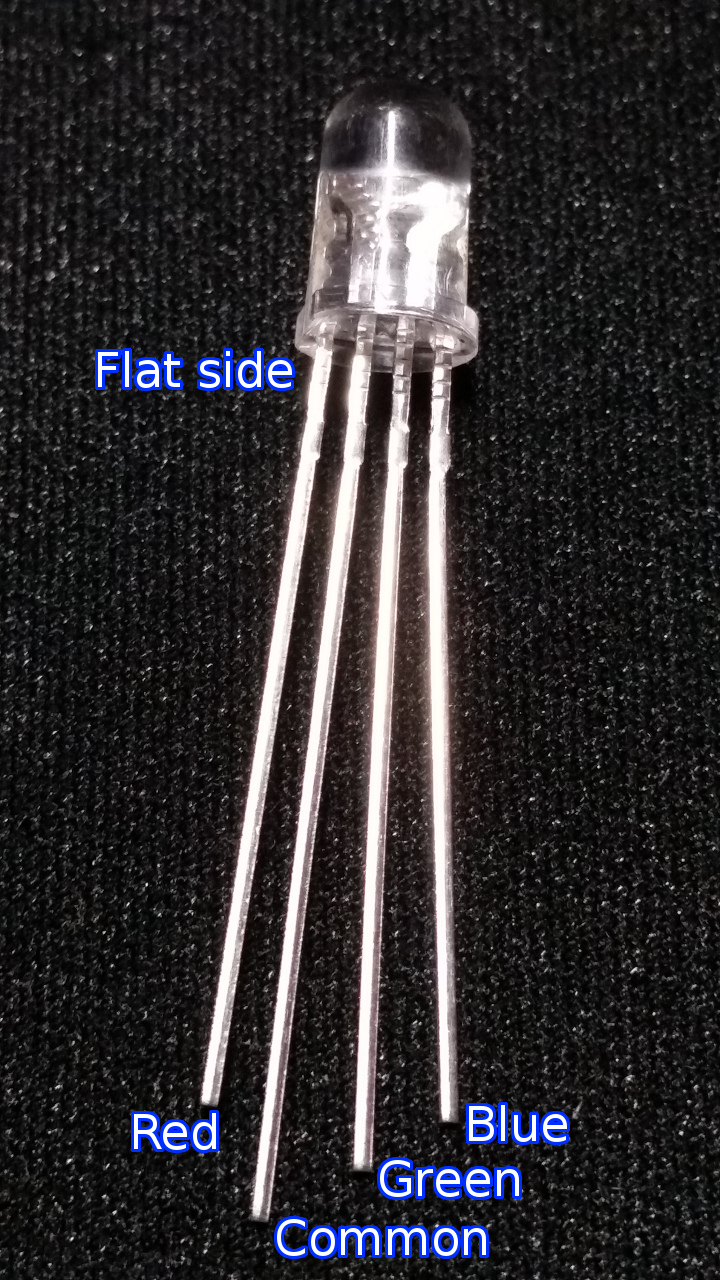Is This RGB LED Common Anode Or Common Cathode?
Say you have a multi-color LED laying in your components bin and you don’t remember whether you bought a common cathode or common anode! How to you find out? It’s fast and simple with the continuity / diode test on your multimeter!
LEDs are diodes and only allow current to flow in one direction (RGB LEDs are of course no different). If you were unaware, to test the polarity of a regular LED, you can use the continuity test mode on your multimeter. Put the black/common multimeter test probe on one lead of the LED and the red probe on the other. If the LED dimly lights up, you know the lead being touched by the black test probe is the cathode. If it doesn’t illuminate, turn the LED around and it should light up with the test leads on the other LED leads. (Check out more pictures at the end of the post.)

Testing a RGB LED is very much the same, but you test continuity between the common lead and one of the 3 other leads. If you don’t know which is the common, it should be the longest lead. If that doesn’t help you, there should be a flat side or notch on one side of the LED. The common should be the second lead from that side. With the black probe on common, touch the red test probe to one of the other pins. If the LED lights up, you know that the common lead is the cathode. If it doesn’t, try the red test probe on the common LED lead and the black probe on any of the other leads. Illumination with red on common means common anode. You can also test which lead is what color this way since the continuity test between common and one lead will light up one color.

I wrote this short blog post because I didn’t see this useful tip with a quick google search of “how to determine if a RGB LED is common anode or common cathode” and thought maybe someone might find their way to this dark corner of the internet and this might help them. Below are some more pictures to help illustrate this tip.






(This post has been migrated from my old blog)